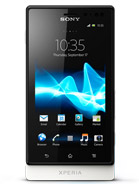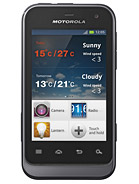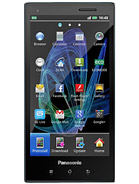Sony Xperia go review: Get out, get wet
Get Out, Get Wet
Final words
Sony may've parted ways with Ericsson but they still seem to hang out at some of the places they used to go together. One thing's for sure, the Xperia go won't mind being around the Xperia active, even if it finds itself under the occasional meter of water.
So, it's a phone that's supposed to make a living off the beaten track, but the Xperia go plays it safe by following closely in the Xperia active's footsteps. Sony have given it a bigger screen and two processor cores and that's as solid an upgrade as any. They've done well to change the styling too, in line with the new NXT series design language.
The Xperia go feels less sporty and muscular than its predecessor but we think it's one of the better-looking durable phones you can get. The solid single-color-body with no flashy accents is perhaps a bit too conservative but we don't mind at all. The Xperia go belongs in a backpack but wouldn't be out of place in an office either.
It's a rugged little handset that will appeal to urban and wilderness adventurers alike. Accordingly, it has some relevant apps preinstalled - like a compass and a torch. There're some fitness applications too in a featured homescreen folder but they're not what we would call a decider. All the apps are available on the PlayStore. There's nothing exclusive about them, any Android phone can have them.
The Xperia go doesn't support ANT+ either. ANT+ is the wireless pairing protocol to use mostly with fitness and health-monitoring devices. The technology was favored by Sony Ericsson but not Sony, obviously. This isn't such bad news though, not as bad, at least, as the absence of some value-adding accessories in the box. The Sony Ericsson Xperia active used to ship with a wrist strap and an arm case, which the Xperia go only offers in the "Sports Edition" version.
This should be enough, comparison-wise. One last thing to note though: there's no difference in the level of water and dust resistance between the two generations. Both the Sony Ericsson Xperia active and the Sony Xperia go are IP67 certified and both have wet-finger tracking for that texting in the rain or with sweaty fingers. That's the main reason why we decided not to put the Xperia go in the fish tank. Torture testing was out of the question - and skinny dipping doesn't quite qualify. And it wouldn't have told us anything new.
Anyway, the Sony Xperia go's water resistance hardly needs much further proof, and we think it's built well enough to take a few knocks on top of the usual wear and tear. The important thing here is that, while the IP67 certification for dust and water resistance is a key selling point, the phone sales will not be solely driven by its rugged credentials.
The design is rather mainstream to begin with, which is by no means a bad thing. Then, the microSIM to regular SIM adapter shows good thinking - the Xperia go will probably be in high demand as a back-up device for outings.
Overall, it's a bit of a niche alternative of the Xperia sola and the Xperia U. Both have the exact same chipset, similar design, but better displays. The Xperia U has a cap on the storage but is probably the cheapest dual-core smartphone on the market. Speaking of which, the Xperia Go is more expensive than both the sola and the Xperia U, but not by much.


Sony Xperia sola • Sony Xperia U
The Panasonic Eluga DL1 is the only other rugged smartphone powered by a dual-core processor. It's IP57-certified, which is a notch below the Xperia go's level of dust protection with the same degree of water resistance. The Eluga DL1 has a 4.3" OLED screen of qHD resolution and an 8 MP camera, which drive the price up and the phone isn't as readily available as the Xperia go.
Traditionally well placed in the rugged smartphone market, Motorola have what's currently the cheapest tough phone. The DEFY mini costs about 125 euro and obviously fails to match the Xperia go. The mini has a smaller screen, a measly single-core processor and inferior stills and video. For around 180 euro you could opt for a single-core DEFY+, which boasts a much better 3.7" FWVGA screen and a 5MP camera.


Motorola DEFY+ • Motorola Defy Mini XT320
So, the Xperia go has few real rivals: rugged smartphones are gaining popularity but you wouldn't say the niche is too crowded yet. Sony have done well to position themselves on that market and it doesn't look like it has cost them a fortune to build the Xperia go. It can appeal to both urban users who wouldn't mind an extra level of protection against the elements and those who embrace an active, outdoor lifestyle. What they need is a phone that will survive a splash, not make one.
Reader comments
- Anonymous
- 10 Jul 2024
- pXm
3g = wcdma
- K4
- 11 Jan 2022
- pL1
This phone claims to support 3G however I am only getting WCDMA only /GSM only / WDCMA preferred/GSM No option whatsoever for for 3G!!
- Anonymous
- 01 Mar 2015
- Njs
It is do vulnerable ,easy to hate! Low battery life easy to smash screen Ooooooooh sloooooooooow Make me sick this phone
